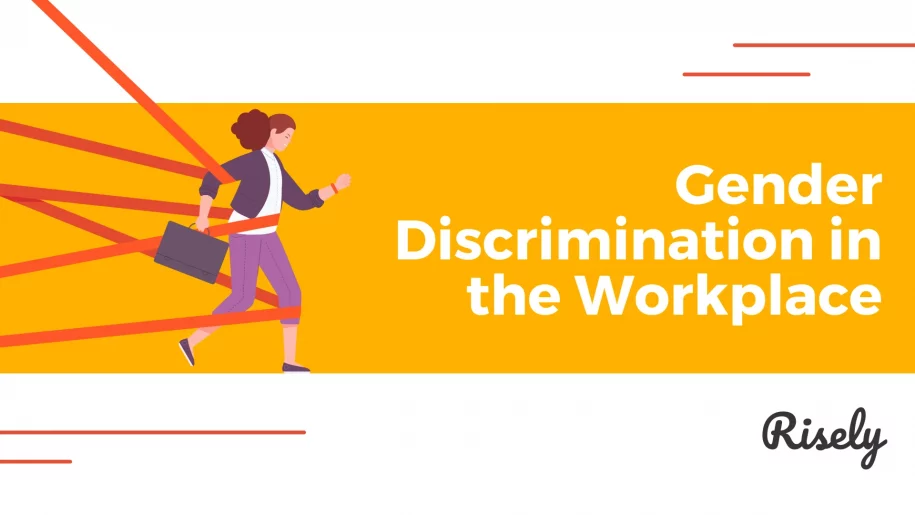Gender Discrimination In The Workplace: What Can Managers Do
Gender discrimination in the workplace continues to be a pressing issue that affects individuals and organizations. Despite significant progress towards gender equality, women still face barriers and biases that hinder their professional growth and limit their opportunities. From the gender pay gap to the lack of representation in leadership positions, gender discrimination manifests in various forms and has far-reaching consequences. It not only affects women’s economic well-being but also impacts the overall success and productivity of businesses. You can play a pivotal role in fostering a more inclusive and diverse workforce. This blog will explore the critical highlights of gender discrimination in the workplace, provide insights into its prevalence and impact, and discuss strategies that you can adopt to combat gender discrimination.What is Gender Discrimination in the Workplace?
Gender discrimination in the workplace refers to the unequal treatment of individuals based on their gender, particularly in terms of employment opportunities, pay, and career advancement. It is rooted in societal stereotypes and workplace biases that perpetuate inequalities and limit women’s professional growth. Despite legal protections and increased awareness, gender discrimination continues to be a pervasive issue in various industries and organizations. You might have seen it happening around you! It hampers women’s ability to succeed, stifles innovation and diversity, and creates an unfair and hostile work environment. Understanding the nuances and impact of gender discrimination is crucial for managers to address and combat this issue effectively.💡 The current global labour force participation rate for women is just under 47%. For men, it’s 72%.
Source: ILO
What does gender discrimination look like?
Gender discrimination involves the unfair treatment or unequal opportunities for individuals based on their gender. It occurs when individuals are treated differently or face barriers in employment, promotion, pay, or other aspects of their professional lives solely because of their gender. But, it has no fixed shape. Think of discriminatory behavior you might have noticed. What was the most common?Wage Disparities Between Genders
One significant form of gender discrimination is the gender pay gap, where women are paid less than men for the same work. Despite progress in closing the gap, it still exists, with women earning, on average, less than their male counterparts. Women of color face an even larger wage disparity compared to white women. This wage disparity starts from the hiring process, where women’s salary expectations are often lower, and continues throughout their careers. The gender pay gap widens as women climb the corporate ladder, further hindering their ability to achieve financial equality.Lack of Gender Representation in Leadership Positions
Another form of gender discrimination is the lack of gender representation in leadership positions. Women are often passed over for promotions and development opportunities, resulting in a limited number of women in leadership roles. While progress has been made, women are still underrepresented in top executive positions and boardrooms. This lack of representation is even more pronounced for women of color and women in the LGBTQ+ community. The absence of diverse voices and perspectives at the leadership level hampers organizational innovation and growth. Read more: Leadership Coach For Women: What Makes It DifferentGender Stereotypes and Their Effects on Professional Opportunities
Gender stereotypes contribute to gender discrimination in the workplace. These stereotypes assign certain characteristics, roles, and expectations to individuals based on gender. For example, you might have seen women being stereotyped as being more nurturing or emotional, while men are perceived as more assertive or leadership-oriented. These stereotypes limit women’s professional opportunities and contribute to the motherhood penalty, where women face biases and challenges in their careers due to motherhood responsibilities. The glass ceiling is another consequence of gender stereotypes, where women are prevented from advancing to higher-level positions within organizations. You must challenge and rectify these stereotypes to create a more inclusive and equal work environment as a manager.Other Interesting Reads
How Can You Combat Gender Discrimination As A Manager?
Managers play a vital role in combating gender discrimination in the workplace. You can create a more equitable work environment by implementing strategies and promoting policies that foster equality and inclusion.Promoting Equal Pay for Equal Work
One key strategy for managers to combat gender discrimination is to promote equal pay for equal work. This involves ensuring that all employees on your team are paid based on their skills, qualifications, and performance rather than their gender. You can conduct pay audits to identify and address any gender-based pay disparities. You can also advocate for pay raises and bonuses based on merit rather than gender. The key is to be open to spotting instances of gender discrimination at work.Implementing Transparent Promotion and Hiring Processes
Transparent promotion and hiring processes play a crucial role in addressing gender discrimination in the workplace. By ensuring transparency, you can create a fair and equal opportunity for all employees to advance in their careers. It includes providing clear criteria for promotion and hiring decisions and transparent communication about the process. One important aspect of transparent promotion and hiring processes is addressing unconscious bias. Unconscious bias refers to individuals’ implicit biases, which can influence their decision-making process without their awareness. These biases result in unfair treatment or favoritism towards specific individuals or groups. To mitigate unconscious bias, you can implement strategies such as blind hiring, where personal identifying information is removed from resumes and applications. Additionally, providing unconscious bias training for managers and employees can help raise awareness and promote fair decision-making.Developing Gender Sensitivity and Inclusivity Training Programs
Developing gender sensitivity and inclusivity training programs is essential for creating a more inclusive and respectful workplace culture. These training programs raise awareness about gender-related issues, promote understanding and empathy, and foster a culture of inclusivity. Gender sensitivity training helps your employees understand and challenge their own biases and assumptions related to gender. It provides education on topics such as unconscious bias, gender stereotypes, and the impact of gender discrimination on individuals and the workplace. Inclusivity training goes beyond gender and addresses the importance of respecting and valuing diversity in all its forms. It encourages employees to recognize and appreciate the unique perspectives and contributions of individuals from different backgrounds and identities. You can deliver these training programs through workshops, seminars, or online modules. To demonstrate their commitment to creating a more inclusive workplace culture, it is essential to involve senior leaders in these training initiatives.Establishing Clear Anti-Discrimination Policies and Procedures
Establishing clear anti-discrimination policies and procedures is crucial for addressing gender discrimination in the workplace. These policies help you set guidelines for acceptable behavior and outline the consequences of any form of discrimination, including gender-based discrimination. Anti-discrimination policies should clearly state that gender discrimination will not be tolerated and provide definitions of what constitutes discrimination, including examples of gender discrimination in various forms. They should also outline the reporting process for incidents of discrimination and ensure that individuals who report such incidents will be protected from retaliation. Human resources departments play a crucial role in implementing and enforcing anti-discrimination policies. You can join hands to ensure that employees know the policies and procedures, provide training on discrimination prevention and handle complaints and investigations fairly and impartially. Read more: Elevating Excellence: The Strategic Role of HR in Today’s WorkplaceFostering an Inclusive Workplace Culture
Creating an inclusive workplace culture is essential for combating gender discrimination and promoting equality. An inclusive culture values diversity and ensures that your employees feel respected and included, regardless of gender or identity. In an inclusive workplace culture, open dialogue on gender issues is encouraged, diverse perspectives are valued, and gender diversity is celebrated. Furthermore, supporting work-life balance for all your employees and empowering them to address gender discrimination enhances the workplace’s overall inclusivity.Encouraging Open Dialogue on Gender Issues
Encouraging open dialogue on gender issues is crucial for creating an inclusive and respectful workplace environment. Open dialogue provides a platform for employees to discuss their experiences, share perspectives, and raise awareness about gender-related challenges and biases. You can facilitate open dialogue by creating discussion spaces like employee resource groups, town hall meetings, or diversity and inclusion forums. These platforms allow employees to voice their concerns, share their stories, and propose solutions. It helps break down barriers and promotes understanding among employees. It also allows you to identify and address systemic issues related to gender discrimination.Empowering Employees to Address Gender Discrimination
Empowering employees to address gender discrimination is crucial for creating a culture of equality and respect. You can foster an environment where everyone feels safe and supported by providing employees with the tools and resources to address discrimination. Creating safe channels for reporting discrimination encourages employees to speak up and seek resolution when they experience or witness gender discrimination. You should ensure that these reporting channels are easily accessible and confidential. Employee resource groups (ERGs) can also be vital in advocacy and support. ERGs provide a platform for employees to come together, share experiences, and take collective action to address gender discrimination and promote equality.Conclusion
In conclusion, fostering an inclusive workplace culture free of gender discrimination is paramount for organizational success and employee well-being. By implementing transparent processes, promoting equal pay, and providing gender sensitivity training, you can create a supportive environment where all employees feel valued and respected. Encouraging open dialogue, celebrating diversity, and supporting work-life balance further contribute to a harmonious workplace. Empowering employees to address discrimination through safe reporting channels and ERGs enhances advocacy efforts in your team.Do you make decisions free of bias?
Assess your decision making skills for free today with Risely’s self-assessment for managers.
Other Related Blogs
6 Performance Review Biases That Make Your Team Ineffective
6 Performance Review Biases That Make Your Team Ineffective As a manager, you want your team to be effective and productive. One of the critical factors in ensuring that is…
6 Steps to Beat Common Critical Thinking Barriers at Work
6 Steps to Beat Common Critical Thinking Barriers at Work Critical thinking is a valuable life skill that allows us to analyze and evaluate information before making decisions. However, it…
5 Steps to Overcome the Halo and Horn Effect at Work (with Examples)
5 Steps to Overcome the Halo and Horn Effect at Work (with Examples) Managers must make sound decisions in the workplace without bias clouding their judgment. This is especially important…
7 Ways to Develop Critical Thinking Skills as a Manager
7 Ways to Develop Critical Thinking Skills as a Manager Critical thinking is the ability to think logically and analytically and make sound decisions. It is the ability to think…


